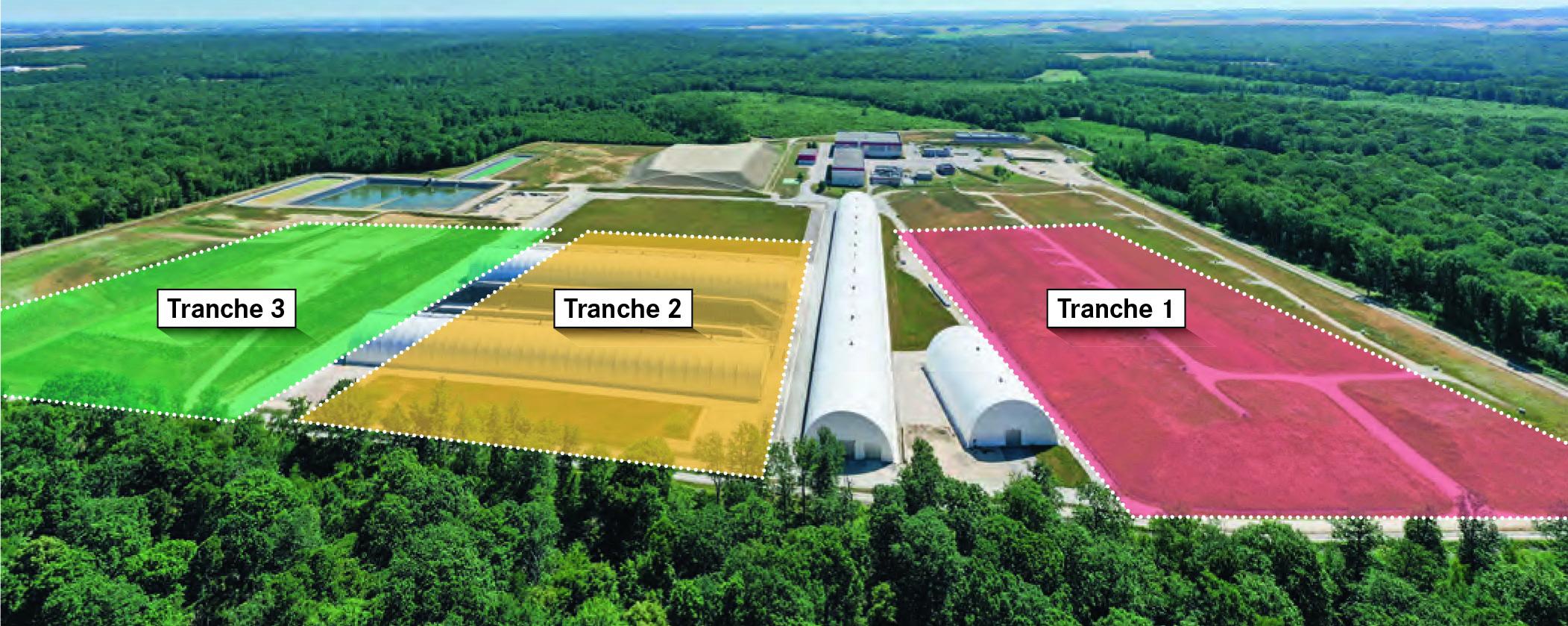
France’s National Agency for the management of radioactive waste (Andrea - l’Agence nationale pour la gestion des déchets radioactifs) has applied to the prefecture of Aube for an environmental authorisation to increase the storage capacity of Cires, the storage centre for very low-level radioactive waste (TFA - très faible activité). The coming months will see examination of the project by various state authorities and a public consultation.
The Acaci project (Augmentation de la CApacité du Cires - Increasing the CApacity of CIres) aims to increase the authorised storage capacity for TFA at the industrial centre for collection, storage and disposal, Cires, without increasing the footprint of the existing storage area of the site.
When it was established in 2003, The Cires site was designed and authorised to receive 650,000 cubic metres (cu.m) of TFA radioactive waste on three storage areas - tranche 1, 2 and 3. By the end of 2022, Cires had reached 69.4% of its total authorised storage capacity. Based on TFA waste delivery forecasts by the producers, the centre is expected to reach its total storage capacity around 2028/2029. At the same time, according to the National inventory of radioactive materials & waste published by Andra, 2.1m-2.3m cu.m of TFA waste will be produced by 2050-2060, in particular during the dismantling of nuclear installations currently in operation.
Management solutions are therefore currently being studied. The medium-term solution involves increasing capacity without changing the current footprint of the storage area while maintaining safety levels. The Acaci project is based on several years of experience in optimising storage space, involving adaptations to the design of the cells and disposal provisions.
When Cires was commissioned in 2003, the disposal cells were 80 metres long and could contain 10,000 cu.m of waste. Two cells were built one behind the other and were separated by a road. Since 2007, cells 176 metres long have been built. This represents two cells one behind the other plus the road. This increases the capacity of a cell to 25,000 cu.m.
In 2010, a steepening of the slopes and a deepening of the cells made it possible to achieve the disposal of 27,000 cu.m per cell. Further optimisation took place in 2016, which involved raising the height of the upper part of the repository (the part above ground level). The cells now have a storage capacity of around 30,000 cu.m.
These successive optimisations have made it possible to save more than 50% of the area initially planned to accommodate the 650,000 cu.m of waste in the authorised storage capacity. Only two of the three trances will be used by 2028/2029.Tranche 3, therefore remains free and would make it possible to handle between 250,000-300,000 cu.m of additional waste – a total of more than 900,000 cu.m on the Cires within the same area.
Andra is therefore seeking to develop tranche 3 for use once tranche 2 is filled. This would give 10-15 years of additional storage capacity and would allow more time to evaluate, in parallel, the relevance of other TFA waste management solutions. This include construction a new centre for which Andra is carrying out studies in the area of Vendeuvre-Soulaines. Another possibility is storage of part of the waste on the production sites or even recycling in the nuclear sector of part of the waste, in particular metal waste.
The environmental authorisation procedure consists of three phases which are expected to take more than one year. These are the examination phase, the public consultation and a decision phase by the prefect. This will be based on the report and the reasoned conclusions of the investigating commissioner, and after possible consultation with the Departmental Council for Health & Technological Risk Assessment.
The objective is to make the first storage cell of tranche 3 available before the end of operation of tranche 2. Thus, according to the projected schedule, work could begin in 2024-2025 if authorisation is given.